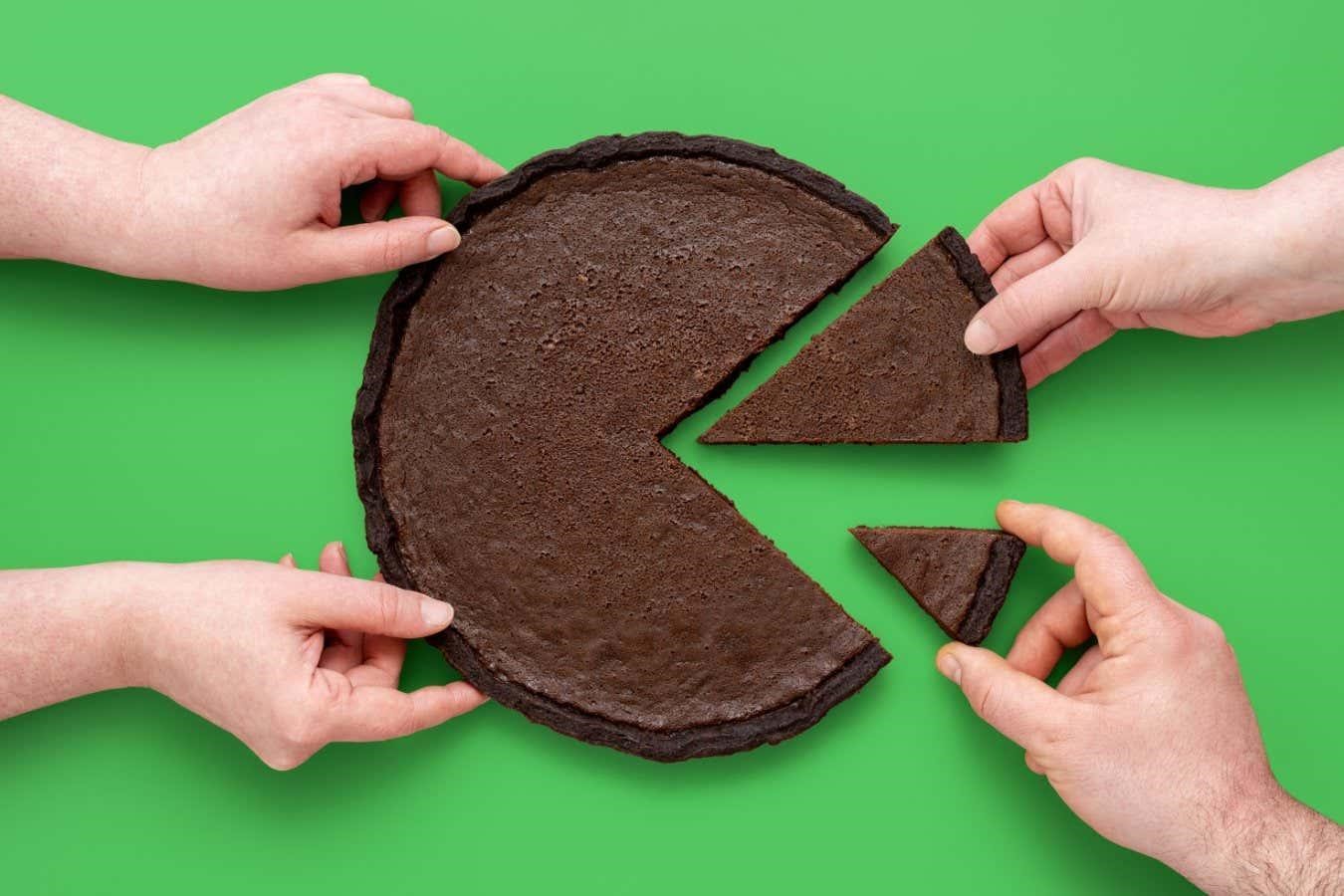Whether you are sharing a cake or a coastline, maths can help make sure everyone is happy with their cut, says Katie Steckles.
One big challenge in life is dividing things fairly. From sharing a tasty snack to allocating resources between nations, having a strategy to divvy things up equitably will make everyone a little happier.
But it gets complicated when the thing you are dividing isn’t an indistinguishable substance: maybe the cake you are sharing has a cherry on top, and the piece with the cherry (or the area of coastline with good fish stocks) is more desirable. Luckily, maths – specifically game theory, which deals with strategy and decision-making when people interact – has some ideas.
When splitting between two parties, you might know a simple rule, proven to be mathematically optimal: I cut, you choose. One person divides the cake (or whatever it is) and the other gets to pick which piece they prefer.
Since the person cutting the cake doesn’t choose which piece they get, they are incentivised to cut the cake fairly. Then when the other person chooses, everyone is satisfied – the cutter would be equally happy with either piece, and the chooser gets their favourite of the two options.
This results in what is called an envy-free allocation – neither participant can claim they would rather have the other person’s share. This also takes care of the problem of non-homogeneous objects: if some parts of the cake are more desirable, the cutter can position their cut so the two pieces are equal in value to them.
What if there are more people? It is more complicated, but still possible, to produce an envy-free allocation with several so-called fair-sharing algorithms.
Let’s say Ali, Blake and Chris are sharing a cake three ways. Ali cuts the cake into three pieces, equal in value to her. Then Blake judges if there are at least two pieces he would be happy with. If Blake says yes, Chris chooses a piece (happily, since he gets free choice); Blake chooses next, pleased to get one of the two pieces he liked, followed by Ali, who would be satisfied with any of the pieces. If Blake doesn’t think Ali’s split was equitable, Chris looks to see if there are two pieces he would take. If yes, Blake picks first, then Chris, then Ali.
If both Blake and Chris reject Ali’s initial chop, then there must be at least one piece they both thought was no good. This piece goes to Ali – who is still happy, because she thought the pieces were all fine – and the remaining two pieces get smooshed back together (that is a mathematical term) to create one piece of cake for Blake and Chris to perform “I cut, you choose” on.
While this seems long-winded, it ensures mathematically optimal sharing – and while it does get even more complicated, it can be extended to larger groups. So whether you are sharing a treat or a divorce settlement, maths can help prevent arguments.
For more such insights, log into www.international-maths-challenge.com.
*Credit for article given to Katie Steckles*


